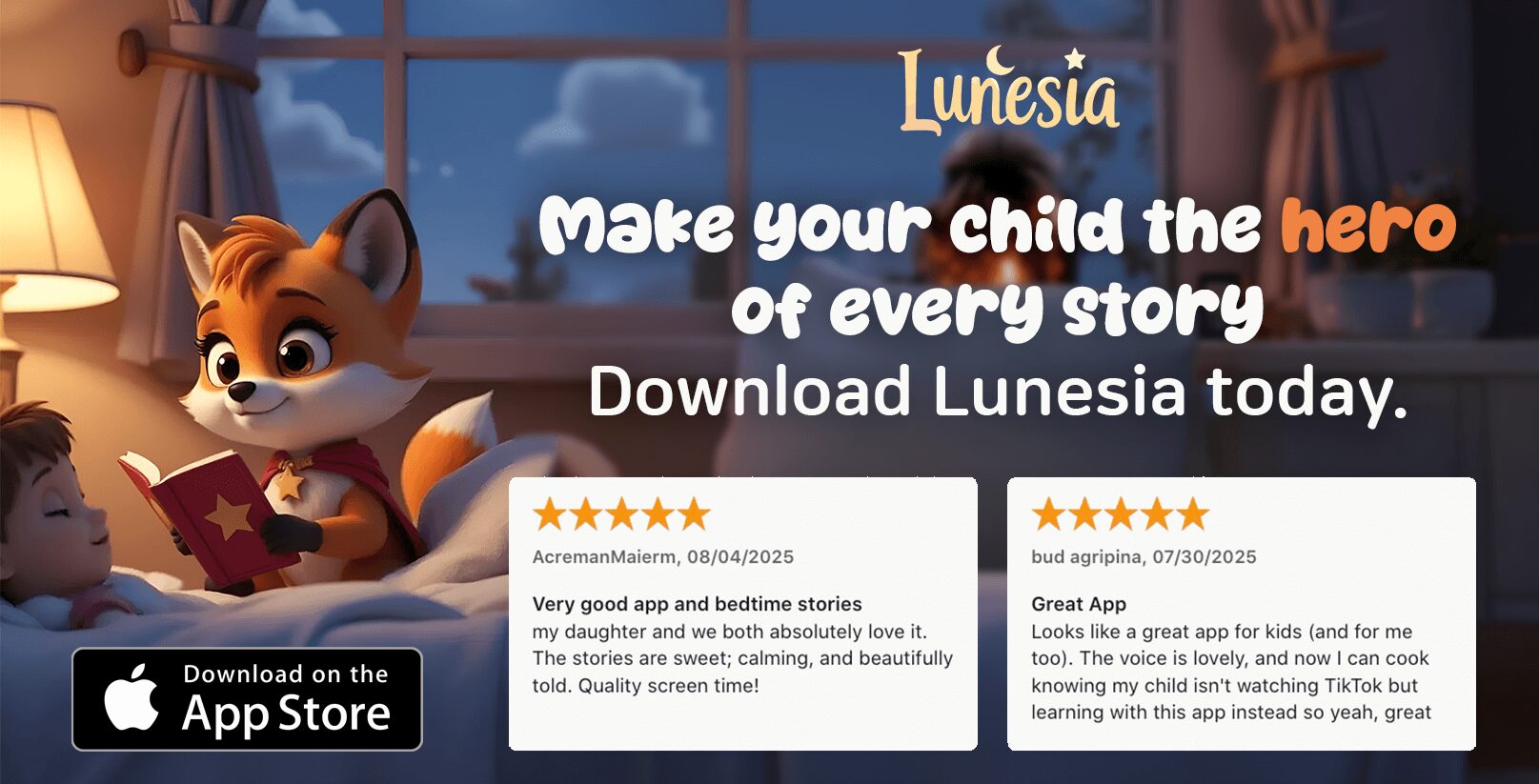As a parent, have you ever wondered how you can help your child develop the inner strength to bounce back from life’s challenges? Resilience is a crucial life skill that can be nurtured from a young age, and stories are a powerful tool in this process.
Research shows that children around the age of 5 are particularly receptive to narrative-based learning, making it an ideal time to introduce stories that model resilience. By surrounding your child with books and stories whose characters face challenges and overcome obstacles, you can help develop their resilience skills.
In this comprehensive guide, we’ll explore how carefully selected stories can help your child develop crucial resilience skills. You’ll discover not only which stories work best but also how to use them effectively to create meaningful learning experiences for your child.
Understanding Resilience in Early Childhood Development
As a parent, understanding resilience in early childhood development is crucial for nurturing a strong and capable child. Resilience is not about shielding children from challenges, but about equipping them with the inner strength to navigate through difficulties.
Resilience in 5-Year-Olds: What It Means
For a 5-year-old, resilience is about developing the ability to regulate their emotions, persist through frustration, and adapt to changes. It’s about being able to maintain positive relationships even when things don’t go as planned. The Devereux Early Childhood Assessment (DECA) identifies three critical protective factors that contribute to resilience: initiative, self-control, and secure attachment to caregivers.
At this age, children are learning to use independent thought and action to meet their needs, express their feelings in appropriate ways, and form strong, lasting relationships with significant adults.
The Importance of Developing Resilience at This Age
Developing resilience at the age of 5 is crucial because it lays the foundation for better academic performance, healthier social relationships, and improved mental health outcomes throughout life. Research shows that children with strong resilience skills tend to perform better academically and have more positive social interactions.
The 5-year mark is a critical window in a child’s development, as they are forming core beliefs about themselves and their ability to influence their world. It’s an ideal time to introduce concepts of perseverance and a growth mindset.
| Protective Factors | Description | Benefits |
|---|---|---|
| Initiative | Using independent thought and action to meet needs | Enhances problem-solving skills |
| Self-Control | Expressing feelings in socially appropriate ways | Fosters emotional regulation |
| Attachment | Forming strong, lasting relationships with caregivers | Promotes a sense of security and trust |
By understanding and nurturing these qualities, parents can help their child develop the resilience needed to face life’s challenges with confidence.
How Stories Teach Resilience to 5-Year-Old Children
Storytelling is an engaging method for fostering resilience in young children. When we read stories that show characters facing and overcoming challenges, we help our kids develop a similar mindset. As a parent educator, I’ve seen firsthand how narratives can captivate young minds and impart valuable lessons.

The Science Behind Storytelling and Emotional Development
Research in developmental psychology shows that children learn best through narrative rather than direct instruction. Stories engage multiple parts of a child’s brain simultaneously—the language centers process the words, the visual cortex imagines the scenes, and the emotional centers connect with the characters’ feelings. This multi-faceted engagement helps children internalize lessons from stories more deeply than from being told what to do.
When 5-year-olds hear stories about characters overcoming obstacles, their brains create neural pathways that they can access when facing their own difficulties. According to a study published on PMC, narrative engagement can significantly impact a child’s emotional development.
Key Resilience Skills That Stories Can Foster
Through carefully selected stories, children can develop crucial resilience skills, including:
- Emotional regulation
- Problem-solving
- Persistence
- Optimism
- Understanding that mistakes are opportunities for growth
Picture books are particularly effective for 5-year-olds as they combine engaging visuals with narratives that model resilience in age-appropriate ways. When children identify with story characters who demonstrate a growth mindset, they begin to internalize the belief that abilities can be developed through dedication and hard work.
10 Powerful Stories That Build Resilience in Young Children
As a parent, you want your child to be resilient, and reading the right stories together can be a great starting point. Stories have a unique ability to convey complex emotions and experiences in a way that is both accessible and engaging for young children. By sharing stories that focus on resilience, you can help your child develop the skills they need to navigate life’s challenges.
Stories About Overcoming Challenges
Some stories are particularly effective at teaching children about overcoming challenges. For example, “The Most Magnificent Thing” by Amanda Spires follows a little girl who struggles with frustration when her creation doesn’t match her vision, modeling healthy ways to manage disappointment and persevere.

“After the Fall (How Humpty Dumpty Got Back Up Again)” by Daniel Santat reimagines what happens to Humpty Dumpty after his famous fall, showing how he overcomes his fear of heights—a powerful metaphor for bouncing back after scary experiences.
Stories That Teach Growth Mindset
Stories that promote a growth mindset can help children understand that their abilities can be developed through hard work and dedication. “Rosie Revere, Engineer” by Andrea Beaty, a New York Times bestseller, celebrates a girl who learns that failure is just the first step toward success—not the end of the journey.

“The Dot” by Peter Reynolds follows a girl who believes she can’t draw until a wise teacher helps her discover that creativity starts with just making a mark—teaching children that small steps lead to big accomplishments.
Stories About Managing Emotions
Some stories are designed to help children manage their emotions and develop emotional regulation skills. “Pete the Cat: I Love My White Shoes” by James Dean and Eric Litwin teaches children to adapt positively when things don’t go as planned.

“The Color Monster” helps children identify and name different feelings, a crucial step in managing emotions.
Stories That Celebrate Mistakes and Learning
Stories that celebrate mistakes and learning can help children develop a positive attitude toward failure. “Beautiful Oops!” by Barney Saltzberg demonstrates how spills and tears in paper can become opportunities for creative transformation—a concrete way to show 5-year-olds how mistakes can become something wonderful.

“Jabari Tries” by Gaia Cornwall features a young boy overcoming his fear of the diving board, modeling how to acknowledge fear while finding the courage to move forward—a skill essential for resilience.
Practical Strategies for Using Stories to Nurture Resilience
Nurturing resilience in children through storytelling is an effective way to help them navigate life’s challenges. By using stories, parents and caregivers can create a safe and engaging environment where children can explore and understand different emotions and experiences.
Creating Meaningful Discussions
When reading resilience-building stories with your child, pause at critical moments to ask open-ended questions. This encourages your child to think deeply about the story and its themes. For example, you might ask, “How do you think the character feels right now?” or “What could they try next?” Validating your child’s responses helps create a safe emotional space, allowing them to feel comfortable sharing their thoughts and feelings.
Connecting Story Lessons to Real-Life Situations
To reinforce the lessons from the stories, connect them to your child’s real-life experiences. You can say something like, “Remember when you felt frustrated like the character? What did you do?” or “You showed persistence just like this character when you learned to ride your bike!” This helps your child see the relevance of the story to their own life, making the lessons more impactful.
Extending Learning Beyond the Book
Extend the learning beyond reading time by referring back to book characters during challenging moments. For instance, you could say, “Remember how Rosie Revere kept trying? Let’s think like engineers and try a different approach.” You can also create simple activities inspired by resilience-themed books, such as drawing pictures of times they overcame challenges or acting out alternative endings.
| Strategy | Description | Example |
|---|---|---|
| Pause and Ask Questions | Pause during reading to ask open-ended questions. | “How do you think the character feels right now?” |
| Connect to Real-Life | Relate story themes to your child’s experiences. | “Remember when you felt frustrated like the character?” |
| Extend Learning | Refer back to book characters during challenges. | “Remember how Rosie Revere kept trying?” |
By implementing these strategies, parents and caregivers can help children develop the resilience they need to navigate life’s challenges. Consistency and repetition are key, so be sure to reinforce these lessons across different environments, such as home and school.
Conclusion: Raising Resilient Children Through the Power of Stories
By harnessing the power of storytelling, we can equip our kids with the resilience needed to face life’s challenges. Stories are more than just entertainment; they’re powerful tools that shape how our child views themselves and their ability to navigate the world.
As you’ve seen, storytelling combined with empathy can significantly enhance a child’s emotional development. By selecting and discussing stories that model resilience, you’re giving your child a gift that will serve them throughout their entire life journey. Resources like our Big Life Journal – 2nd Edition can be invaluable in this process, offering inspiring stories, colorful pictures, and engaging guided activities.
Remember, building resilience is a gradual process. Consistency in reading and discussing these stories over time will have a more profound impact than any single book or conversation. As your child grows, continue this practice with more complex stories and guided activities, helping them develop persistence, emotional regulation, and problem-solving skills.
FAQ
How can I help my child develop a growth mindset through storytelling?
You can help your child develop a growth mindset by reading picture books that feature characters who face challenges and overcome them. As you read together, discuss how the characters learned from their mistakes and how they applied those lessons to new situations. This helps your child understand that abilities can be developed and that challenges are opportunities for growth.
What are some effective ways to use stories to promote emotional development in my child?
Reading stories that explore different emotions and how characters manage them can help your child develop emotional intelligence. You can also use these stories as a springboard to discuss your child’s own feelings and how they handle difficult emotions. This helps your child develop a stronger sense of self and better coping mechanisms.
How can I connect the lessons from a story to my child’s real-life experiences?
After reading a story together, take a moment to reflect on how the characters handled challenges or difficult situations. Ask your child to think about times when they faced similar challenges. How did they handle it? What did they learn from the experience? By making these connections, you help your child apply the lessons from the story to their own life.
Can you recommend any specific picture books that promote resilience in young children?
Some great picture books that promote resilience include those that feature characters who overcome obstacles, manage their emotions, or learn from their mistakes. Reading these stories with your child can help them develop a stronger sense of resilience and better coping skills.
How can I extend the learning from a story beyond the book itself?
You can extend the learning by engaging in activities that build on the story’s themes or lessons. For example, if a story is about a character who overcomes a fear, you could create a simple activity that helps your child face a similar fear. This helps reinforce the lessons from the story and promotes deeper learning.
What are some strategies for creating meaningful discussions around stories with my child?
To create meaningful discussions, ask open-ended questions that encourage your child to think critically about the story. You can also ask questions that help your child connect the story to their own experiences or feelings. By doing so, you help your child develop a deeper understanding of the story and its themes.




